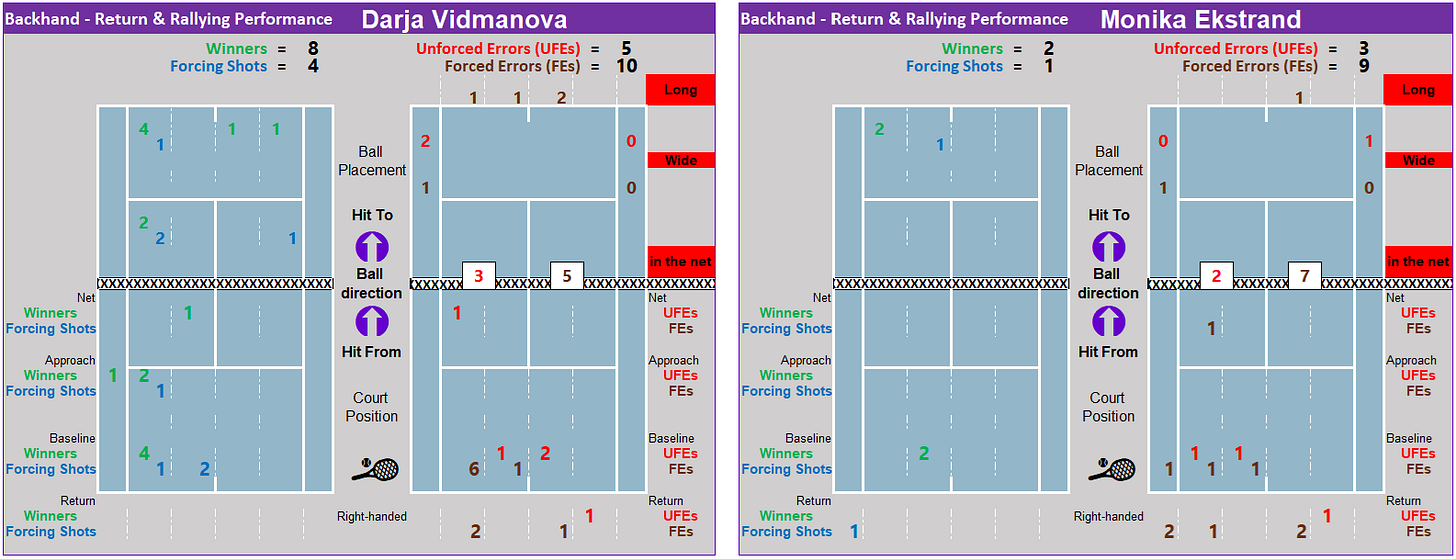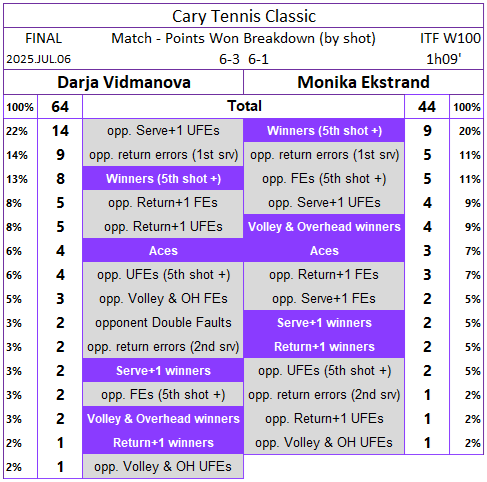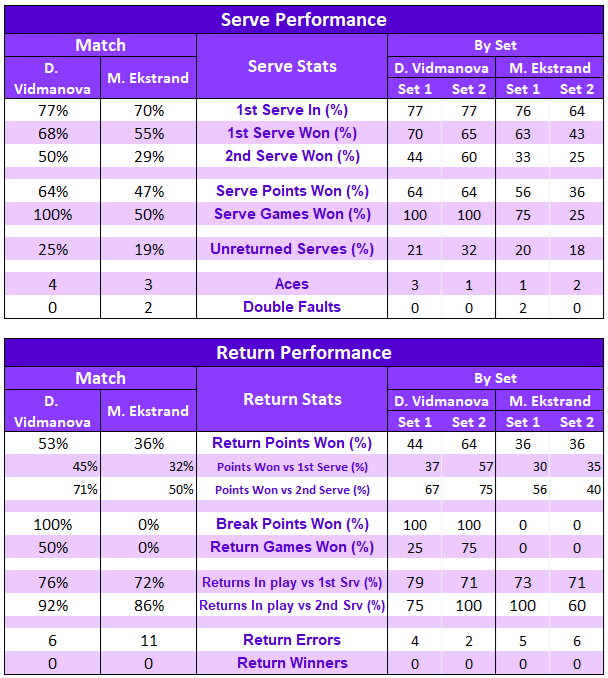ITF W100 Cary: Darja Vidmanova vs Monika Ekstrand final analysis
Third consecutive ITF Tour title and 15-0 match record for Vidmanova since graduating from college
A few weeks ago, University of Georgia Darja Vidmanova became just the third woman** in NCAA history to achieve the collegiate career Triple Crown when she added the 2025 team title to previous triumphs in the 2024 doubles — alongside Aysegul Mert — and 2024-25 singles competitions.
** Linda Gates (1981-1985) and Nicole Gibbs (2010-2013) are the other two NCAA Triple Crown winners, both playing for Stanford University.
Vidmanova’s stellar college journey is already evolving into a successful pro career as the 22-year old Czech (WTA #249) won her first 15 matches since graduating, claiming consecutive ITF Tour titles at W35 Santo Domingo, W75 Sumter and now at W100 Cary.

The latest trophy was clinched on Sunday with a 6-3, 6-1 win over big-hitting 18-year qualifier Monika Ekstrand (WTA #486) in the Cary Tennis Classic final, played indoors due to tropical storm Chantal.
The match began with Ekstrand ripping 2 huge forehands on her way to a 0/40 lead.
📺 source: ITF Tour
But her strong start was shortlived as Vidmanova saved all 3 break points and went on to win 11 straight points.
The Czech moved ahead 3-0 after saving 3 more break points during the 3rd game...
… and erased another one in the 5th game with a perfectly executed drop shot-lob combination.
By now you can already guess the major storyline of the Cary Tennis Classic final.
Each player finished the match accruing break point(s) in 4 return games; Vidmanova achieved a perfect 100% conversion-rate to break 4 times while Ekstrand missed all of her 8 chances.
Break Point conversion
Vidmanova: 100%, 4-for-4
Ekstrand: 0%, 0-for-8
Ekstrand can be praised for a fearless attitude and continuing to go for her shots even when the second set, and consequently the match, were getting out of reach.
But as so often happens to big hitters, her title hopes evaporated due to an inability to rein in mistakes.
On the day, the American teenager was particularly error-prone on “+1s”, accumulating a combined total of 24 misses off “serve+1s” and “return+1s”. The majority of those errors were unforced — 19 of 24, 79% — and leaked from the forehand wing — 21 of 24, 88%.
They also occurred at crucial moments as Ekstrand conceded 3 of 4 breaks with “serve+1” forehand unforced errors on break point.
With 14 fewer “+1” misses, Vidmanova ended up collecting a 21-point advantage (44 to 23), and all the margin she needed, from points decided within the first 4 shots.
Overall, as you may have picked up from the videos shown above, Vidmanova displayed a more developed and mature game.
She delivered some powerful serves and groundstrokes but also held back just enough to profit from her opponent’s misses, hit a few delicate drop shots at important moments, absorbed pace well and changed directions, heights and spins to continuously deny Ekstrand the same ball.
From a well-rounded performance, a special mention must go to Vidmanova’s down the line backhand. A shot that won her 9 points with a single unforced error made (marked by blue box, below).

Probably fitting that the Czech’s last 3 points on serve — including the single break point faced in the second set — were ended by back-to-back-to-back line backhand winners.
Five points later, 3 of them Ekstrand “serve+1” forehand unforced errors, Vidmanova had secured a third straight ITF Tour title and the biggest of her fledgling career.
In the end, the final 20-point gap (64 points won by the champion against 44 by the runner-up) turned out to be a 100%-match to the difference between forehand unforced errors: Vidmanova totalled just 4 while Ekstrand accumulated 24.

Darja Vidmanova (WTA #249) vs Monika Ekstrand (WTA #486, qualifier)
2025 Cary final - Match Data
Set by Set Stats
Strategy Stats
Strokes Breakdown

Winners and Errors (returns & rally shots)
Serve and Return
1st Serves
2nd Serves
Return & rallying performance


Rally Length
Points won breakdown
This final section gives a last, broader look at the match by presenting how each player won points. Points are listed according to their frequency (highest to lowest) and are named in relation to the last touch on the ball. For simplicity, groundstrokes hit from the 5th shot onwards are grouped together.
Breakdown by side (FHs or BHs)

Breakdown by error type (UFEs or FEs)

To find out more about the stats published here, please visit the following post.
While we follow the same criteria used on all major tennis events, our stats are collected through our own video analysis and are not official WTA or ITF stats.
Thanks for reading!
— Tennis Inside Numbers













